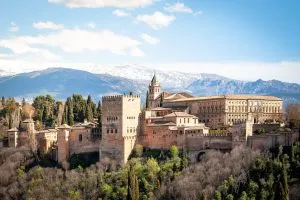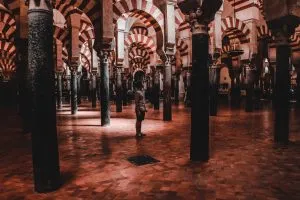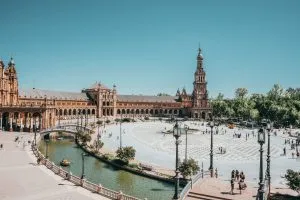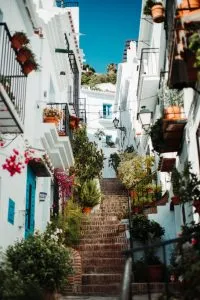Marbella: is situated on the Mediterranean Sea, between Málaga and the Gibraltar Strait, in the foothills of the Sierra Blanca. The city is especially popular with tourists from Northern Europe (including the United Kingdom, Ireland and Germany) and also Saudi Arabia, and the United Arab Emirates. Marbella is particularly noted for the presence of aristocrats, celebrities and wealthy people; it is a popular destination for luxury yachts, and increasingly so for cruise ships, which dock in its harbour.
Nerja: is a municipality on the Costa del Sol in the province of Málaga in southern Spain. It belongs to the comarca of La Axarquía. It is on the country’s southern Mediterranean coast, about 50 km east of Málaga. In more modern times, sugar cane production has given way to more valuable cash crops, particularly semi-tropical fruits such as mango and papaya and widespread avocado plantations in what is one of the major avocado growing regions in Europe
Frigiliana: The municipality is situated approximately 71 kilometers east of Málaga, and approximately 6 kilometers north of Nerja. It is located in the comarca of La Axarquía, the easternmost region of the province.
For four days at the end of August each year, Frigiliana hosts the Festival of the Three Cultures (Festival de las Tres Culturas), celebrating the region’s historic confluence and co-existence of Christian, Muslim and Jewish traditions.
Antequera: It is known as “the heart of Andalusia” because of its central location among Málaga, Granada, Córdoba, and Seville. It is noted for two large Bronze Age dolmens and for an amazing natural Park “El Torcal”.
-
Bronce Age Dolmens: burial mounds (barrows or dolmens), the Dólmen de Menga and the Dólmen de Viera, dating from the 3rd millennium BC. They are the largest such structures in Europe.
-
El Torcal: is a natural reserve known for its unusual landforms, and is one of the most impressive karst landscapes in Europe. The area was designated a Natural Site of National Interest in July 1929, and a Natural Park Reserve of about 17 square kilometres was created in October 1978.





